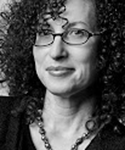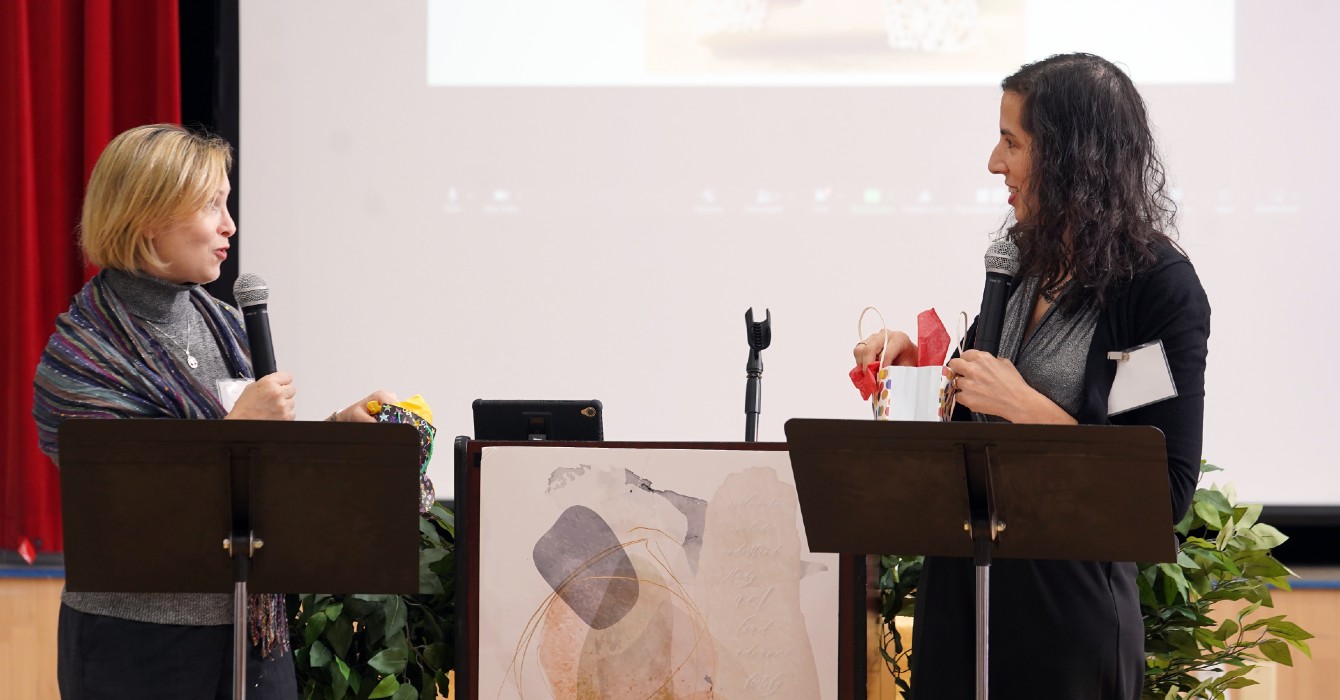After Mindy Seidman moved with her family from Memphis, Tennessee, to Auburn, Alabama, two years ago, she worried that her daughter, Isabella, might not be able to have a proper Jewish coming-of-age ceremony, known as a bat mitzvah.
Unlike Memphis, where the family attended a large Conservative synagogue, Auburn had only one small temple, with 30 member households and no rabbi. Jewish students from Auburn University taught Sunday school.
But Seidman soon discovered that despite its diminished Jewish offerings, Congregation Beth Shalom had a potent tool in its arsenal: a partnership with the Goldring/Woldenberg Institute of Southern Jewish Life.
The institute, based in Jackson, Mississippi, is a kind of transdenominational clearinghouse for all things Jewish. It provides rabbinic services, an educational curriculum, cultural programming, and community engagement opportunities to underserved Jewish communities across 13 Southern states.
Not only did Congregation Beth Shalom use the institute’s Sunday school curriculum, which provides in-depth K-12 lessons; it was supported by one of the institute’s rabbis, who made regular trips to lead Shabbat and holiday services and life-cycle events.
Much of the Institute's work is focused on forming young people, and it leverages technology and human capital. Could this model of formation be useful in your context?
Isabella, known as Izzy, was able to sign up for a weekly online study session with Rabbi Jeremy Simons to prepare her for the bat mitzvah ceremony, in which she read and chanted in Hebrew a passage from the Torah in front of the congregation.
The weekly video chat tutorial over the course of eight months allowed Izzy and Simons to get to know each other while poring over biblical texts. In May, Simons, who is based in Jackson, traveled to Auburn to help lead the bat mitzvah service.
“I don’t think she thought meeting Rabbi Simons on Facetime was odd,” said Seidman, who declared the ceremony a big success. “She was a very committed student and very driven, and she worked very hard.”
Simons, who is tutoring three other Beth Shalom students online, is a kind of circuit-riding rabbi for the 21st century. At a time when many congregations -- not only in the South but across the U.S. -- are declining, he tutors young Jews online, sends out a weekly email sermon and drives most weekends to one of 100 underserved congregations across the South.
As more Americans move to cities with higher-paying jobs, rural communities have become less populated, older and distinctly less Jewish. The U.S. Department of Agriculture estimates that between 2010 and 2014, rural areas lost an average of 33,000 people a year.
Although Jews were never very populous in the rural South, many Jewish European immigrants settled there after the Civil War, opening shops and becoming industrialists. Today, many of those shops are shuttered, and many of the synagogues are foundering.
Still, for those who remain, the Institute of Southern Jewish Life is an anchor.
“It’s not about numbers,” Simons said. “It’s about serving Jews regardless of the numbers or the location or the region. As long as there are Jews in these areas, it’s our mission to be there and to give them services they deserve and don’t have access to.”
A game changer
The Southern Jewish historian Eli N. Evans once wrote about the Jewish South that it was a place where “fathers … built businesses for the sons who didn’t want them.”
Rounds of Eastern European Jews escaping poverty and persecution immigrated to the U.S. in the late 19th century, many arriving on the Eastern Seaboard. But urban cities such as New York or Baltimore were crowded, and many traveled south in search of opportunity.
That was the experience of the Goldberg family of Greenwood, Mississippi. Polish-born Morris Goldberg opened a shoe store in town in 1921, and his son joined him in the business. Other Jews soon found their way to Greenwood, and by 1946, the town had 24 Jewish store owners. At its peak, in 1970, this tiny hamlet 95 miles north of Jackson had 200 Jewish residents and two synagogues.
In what ways might your organization fill in the institutional gaps for the church? In what ways might it benefit from an institution that does so?
Today, 15 Jews remain, including the Goldberg descendants and the shoe store.
One of the synagogues closed; the other, Ahavath Rayim, has not been able to afford a rabbi since the 1970s.
So when Gail Goldberg’s two grandsons, ages 8 and 5, moved back to town last year, the family found a way to educate the community’s two Jewish children through the Institute of Southern Jewish Life’s educational curriculum.
“It’s been a game changer for us,” Gail Goldberg said. “We have a curriculum we follow. The boys have lessons every week. We are fully invested in Jewish education.”
The curriculum consists of 30 two-hour lessons for each school grade at a cost of $36 per pupil (with a flat fee of $800 per community annually to help defray the cost of staff travel to visit the congregations).
The transdenominational lessons cover Jewish history, culture, prayer, Bible study and Hebrew, and they are intended to impart “a common body of Jewish knowledge.” The curriculum is used by some 60 congregations, including Congregation Beth Yeshurun in Houston, the nation’s largest Conservative synagogue.
Smaller, underserved congregations also benefit from three visits a year from an ISJL Education Fellow -- a college graduate who commits two years to working for the institute on religious school programming, Shabbat services and Jewish cultural programs.
Elaine Gutenstein, the principal of her synagogue’s Hebrew school in West Cobb, Georgia, is effusive about the curriculum as well as the assistance she gets from the institute.
“They’re like a huge guidepost for us,” Gutenstein said. “Anytime I want, I can pick up the phone and talk to them or shoot them an email. When you partner with the ISJL, you have your own professional team. It firms up your foundation. For a small congregation, I can’t tell you the wealth that comes to you from that.”
Thinking outside the box
Macy B. Hart, the founder and brains behind the Institute of Southern Jewish Life, jokes that his parents followed a textbook called “How to Torture Your Jewish Child.”
That’s because each Sunday they insisted on piling their four kids in the family station wagon and driving 80 miles each way to the nearest synagogue so their children could get a Jewish education.
The Harts, like the Goldbergs, owned and operated a store in a small Mississippi town -- in their case, Winona, population 4,500.
For the Harts, it was do or die; they were the only Jewish family in town, and they were determined their children should carry on the faith.
It worked.
In ninth grade, Macy Hart joined a temple youth group and was hooked. After graduating from the University of Texas in 1970, he accepted a job as director of the Henry Jacobs Camp in Utica, Mississippi, one of now 16 summer camps run by the Union for Reform Judaism.
He planned to stay a few years and then head off to law school. Instead, he stayed for 30.
In part, that’s because Hart wanted to help Jewish parents like his own who were struggling to transmit their Jewish faith to kids growing up in communities with few or no Jews.
So on top of the summer activities, he set up a year-round speaker program, bringing in scholars for weekend visits so adults could come and learn more about Judaism.
The 1970s marked the beginning of the long decline of rural Southern Jewish communities, and as Hart traveled the region, he began finding synagogues that were closing or about to be demolished. He offered to take their arks, Torahs, pulpit chairs and other ritual objects and house them on the grounds of the camp in what became the Museum of the Southern Jewish Experience (now a museum-without-walls, offering educational programs and traveling exhibits, a part of the ISJL).
But preserving the past was never Hart’s sole intention. He was more interested in Jewish continuity.
So with the financial help of two now-deceased New Orleans-based philanthropists, Stephen Goldring and Malcolm Woldenberg, Hart founded the Goldring/Woldenberg Institute of Southern Jewish Life in 2000.
Last year, the institute served more than 100 Southern Jewish communities.
What lessons can denominations learn from the Institute?
With an annual budget of $2.3 million (about 40 percent of which comes from various foundations), the institute has a lot to be proud of. In its first 15 years, its staff has traveled 1.7 million miles, served 211 congregations, reached more than 5,000 children though its religious school curriculum and provided 630 rabbinic visits.
“It was obvious something was necessary,” Hart said. “We just needed to think outside the box.”

Laying a foundation
The institute’s staff is not in denial about the declining number of Jews in the rural South.
Many of the congregations they serve, such as Temple B’nai Israel in Natchez, Mississippi, are proactively planning their demise. Fewer than 10 members remain in the synagogue of this port city on a bluff above the Mississippi River.
Its cornerstone laid in 1870 by Rabbi Isaac Mayer Wise, the founder of American Reform Judaism, the synagogue of B’nai Israel is the oldest in Mississippi. Rebuilt in 1905 after a fire, the neoclassical brick building boasts soaring ceilings under an exterior dome, stained-glass windows, an ark of Italian marble and a pipe organ built by Henry Pilcher’s Sons of Louisville.
The institute is now helping the congregation raise money to close the synagogue and transform the building into a museum space for the community.
“I get this question a lot -- why bother?” said Simons, who recently visited the elderly residents in Natchez. “But it’s a cynical question. Why bother visiting Jews in nursing homes? Because we’re a community, and that’s what we do. We support each other.”
How would your organization’s leadership answer the question, “Why bother?”
But not all the communities served by the institute are dying. Congregation Etz Chaim in Bentonville, Arkansas, has seen steady growth, thanks mostly to Wal-Mart, which is headquartered there. Thirty miles to the south, Fayetteville built its first synagogue, Temple Shalom, in 2009.
In between, many small congregations, like the one in Greenwood, Mississippi, remain steadfast in their Jewish practices, meeting Friday nights for lay-led services and gathering for Sabbath meals.
“We tend to forget, there are other ways of being Jewish in this country,” Simons said. “We could do more to support those places.”
The institute, meanwhile, continues to grow.
Its newest arm, the Community Engagement Department, is dedicated to the Jewish idea of tikkun olam, or repairing the world. It offers logistical and training support for Jewish congregations that want to design their own community engagement projects.
It has also started a peer mediation program for middle and high school students and a community-based literacy program.
Dave Miller, a former public school assistant principal who now directs the department, said the institute also recognizes that not all Jews are interested in congregational life.
“There are individuals engaged in these programs who don’t go to temple regularly,” he said. Those Jews, he said, can still engage Judaism “by making the world a better place.”
In what ways is your organization focused on preserving the past? To what extent, “passing on the faith?”
Hart, who is 68, remains sanguine about the future of his venture, even as he recognizes that many if not most Jews growing up in the South are likely headed to urban areas: Atlanta, Charlotte, Dallas, Houston, Nashville, New Orleans, Raleigh.
And that’s fine by him -- so long as his institute has had a chance to lay a foundation.
“Our goal wasn’t to save the Jewish South,” he said. “Our goal is that when these kids get to the urban areas they’re going to move to, they’ll say, ‘Where do I sign up?’ as opposed to, ‘If you want me, come find me.’”
Questions to consider
Questions to consider
- What institutions serve as guideposts for your organization? Where do you turn for support? What lessons can denominations learn from the Institute?
- The Institute is focused not on preserving the past or saving “the Jewish South,” but on continuity and passing on the faith. In what ways is your organization -- or more broadly, American Christianity today -- focused on preserving the past? To what extent, “passing on the faith?”
- In many ways, the Institute fills in institutional gaps for communities with unique needs. In what ways might your organization fill in the gaps for the church? In what ways might it benefit from an institution that does so?
- Much of the Institute's work is focused on forming young people, and it leverages technology and human capital. Could this model of formation be useful in your context?
- What obligations, if any, do large churches and denominations owe to struggling rural congregations?
- How would your organization’s leadership answer the question, “Why bother?”














